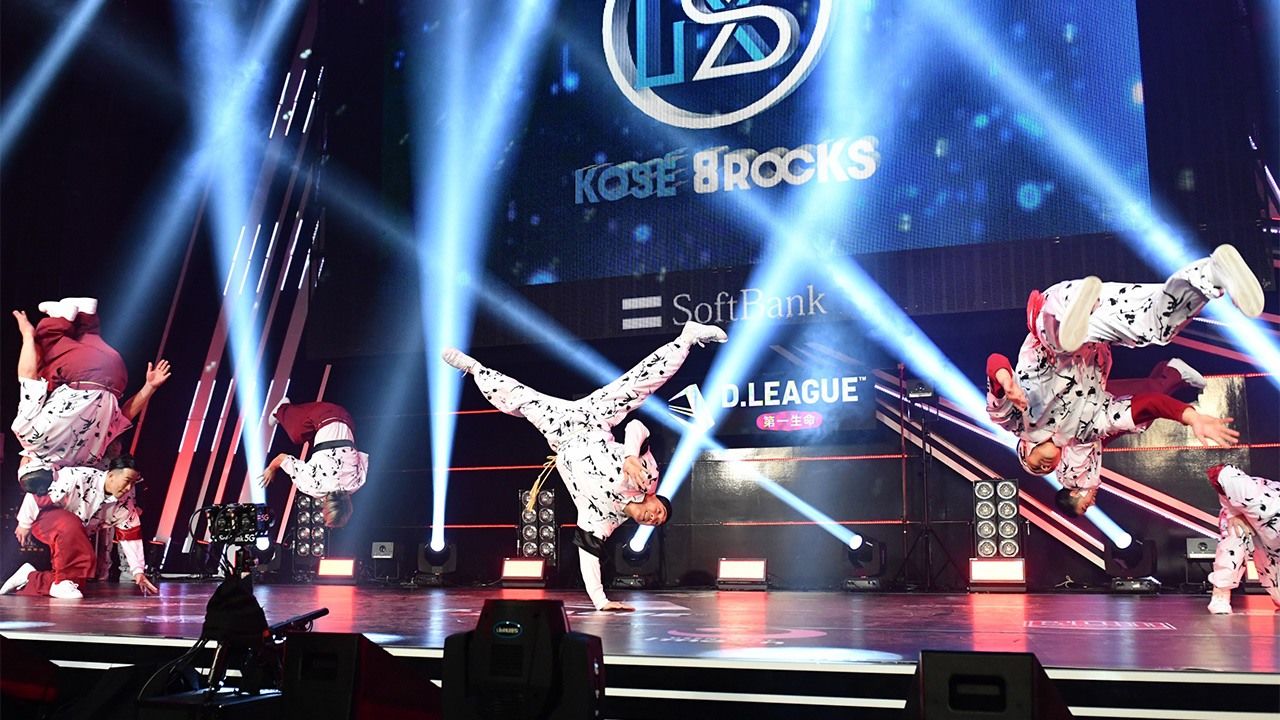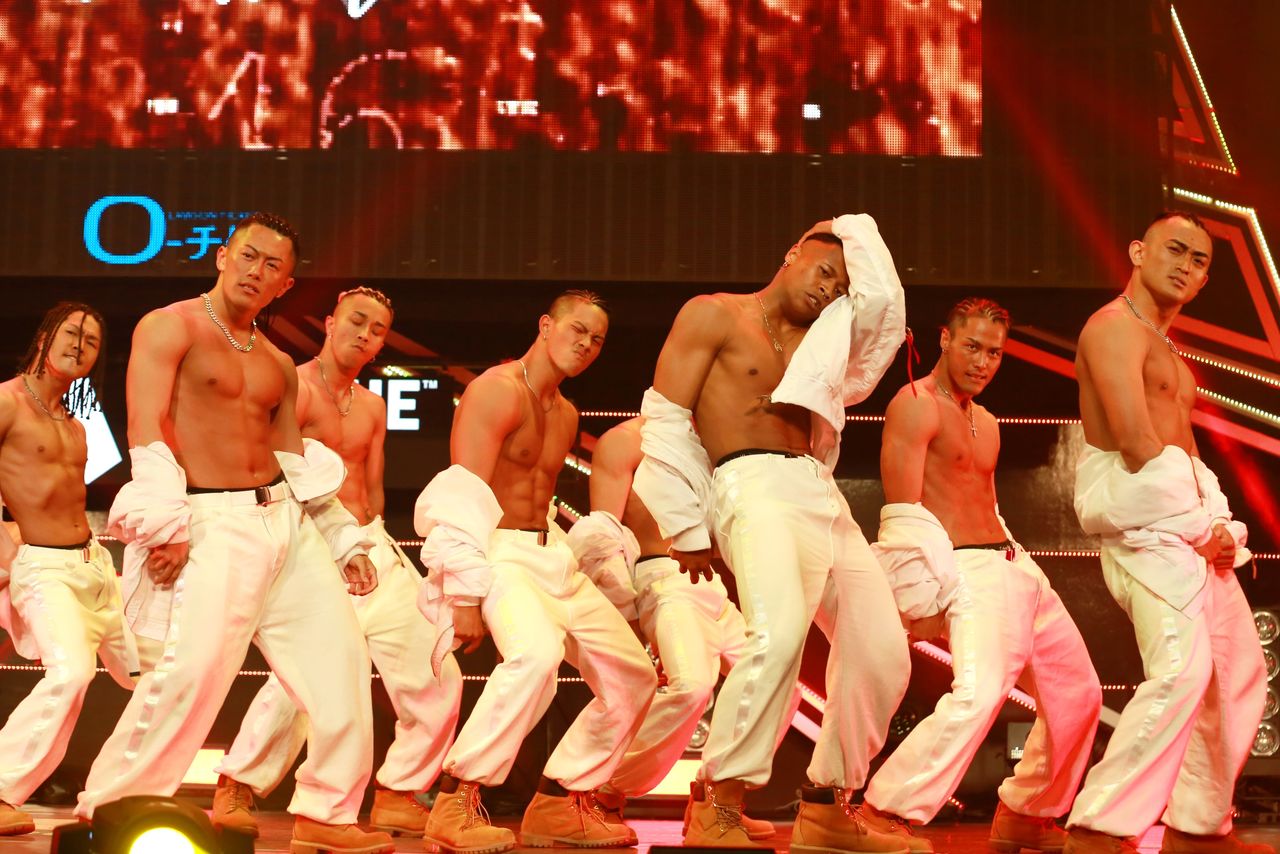
Japan’s D. League Puts the Spotlight on Dance Sport Breaking Ahead of Debut at Paris 2024
Sports- English
- 日本語
- 简体字
- 繁體字
- Français
- Español
- العربية
- Русский
Listening in on a group of teens excitedly talking, I am perplexed by their banter. “Never mind J or B, it’s D you should be watching,” exclaims one. “Did you watch the D. League yesterday?” asks another. “Yea! Wasn’t Issei awesome?” offers a third.
The youngsters are bursting with enthusiasm, the expression on their faces as they talk makes the topic of conversation all the more fascinating. Everyone in Japan knows that the J. League means soccer and the B. League basketball. But the D. League? And who is Issei? What is this all this about, anyway?
Growing Dance Sport Trend
The D. League is Japan’s professional breaking competition that kicked off in January of this year. Most people have heard of break dancing, and breaking is in fact the media presentation of the dance style. And Issei? As one of the stars of the league, he is unique in being both the director and a dancer of Kosé 8Rocks, a leading breaking team.
The league consists of nine teams of eight members each who face off at regular competitions. Fans can follow the action live through a public app or on a smartphone.
Teams perform their dance routines and are ranked according to their scores. Points are given for technical difficulty, choreography, and performance, as well as expressiveness. Where things get interesting is that spectators participate in the scoring. This aspect is a major attraction for audiences and helps draw fans beyond just those who attend the performances.
Having gained traction among younger audiences, breaking is also drawing attention from another point of view. The International Olympic Committee decided in December 2020 to include the sport in the 2024 Paris Olympics. It is not just a question of the D. League gaining popularity in Japan. Breaking is now going truly international.
So, how did this come about?
Breaking is a form of street dancing that first arose in New York in the 1970s. It developed its own distinct culture, and as it grew in prominence it came to be featured in popular movies of the day, including such iconic hits as Flashdance and Footloose.
In breaking’s competitive form, individuals or teams go head to head in “battles,” with competitors, known as b-boys and b-girls, pitting their skills against other dancers in high-octane events.

Dance team Fullcast Raiserz, a “muscular combat style” men-only crew, were the D. League leaders at the end of the tenth round of the competition. (© D. League 20–21)
Corporate Interest
The breaking format in Paris will likely consist of one-on-one and mixed team battles. However, there still remains the question as to why the IOC decided to introduce a seemingly niche dance sport at the games as a new competition. The answer to this lies in the great potential of breaking.
“Even before it was included in the Paris program, I was sure breaking would become an Olympic sport,” asserts Kanda Kantarō, a senior executive of the firm that operates the D. League. A dancer himself, Kanda was keenly aware of the potential of breaking and set up a professional league, describing the style as an “art sport.”
“If you look back at the history of the Olympics,” says Kanda, “you can see that it originally was a festival of art and sports, with a clear dividing line existing between the two. At the sports end, there is an obvious demarcation between winning and losing, whereas with artistic events the evaluation is more interpretive. Breaking is a fusion of arts and sports, a combination of the two.”
When talking of art sports, figure skating comes to mind. The sport has traditionally combined technical prowess with expressiveness. Whereas some fans are drawn by such technical skills as jumping, others enjoy the expressiveness and beauty of performances. These differing aspects have broadened the appeal of figure skating and contributed to the development of the sport.
With breaking, too, there are people who are drawn by the incredible techniques of dancers along with fans who revel in the stylishness of the sport and its beauty. This dualism characterizes art sport.
There are also people who are attracted by the fact that breaking offers a whole new cultural construct. Dancers all have original stage names, usually something they have come up with themselves or a nickname they received, that represent their identity. This aspect has been ingrained in the culture of breaking since its beginning.
Another allure of breaking is that no equipment is needed to dance.
If you look at competitive sports that are popular worldwide, soccer and athletics, running in particular, come to mind. In the case of soccer, anything round can serve as a ball, enabling games of “street soccer” to take place anywhere there is an open space, such as a town square. Likewise with athletics, any open area can serve as a track and anyone can take part, even without equipment.
The same holds true for breaking. It is not unusual to see dancers at night practicing moves in the empty courtyard of a shopping center or other location. The accessibility of breaking has helped fuel its popularity globally, particularly among young people.

Mixed team Avex Royalbrats is one of the top groups in the D. League. The team features b-girl Riehata, who is also the group’s producer. (© D. League 20–21)
The IOC in recent years has looked to develop the Olympics further by introducing new competitions based on their worldwide diffusion and recognition, with a particular eye to sports that appeal to young people. Sports climbing and skateboarding, along with breaking, are examples of this trend in the summer Olympics, as is snowboarding in the winter games.
Kanda points to the physical expressiveness of breaking in its appeal to younger generations, stating that “you don’t need words to communicate. Even when dancers don’t speak each other’s language, they can connect.” Breaking was doubtless chosen for the Olympics because of the high expectation for the sport, and the games in turn will be an opportunity to develop breaking further.
Japan’s Gold Metal Prospects
The dance sport has huge growth potential in Japan. The country boasts a number of dancers who have the ability to win gold at the Olympics. Like in other sports, a gold medal would thrust the dancer as well as breaking into the limelight.
One of the leading prospects is Hori Issei, known simply by his breaking handle Issei. A star in the D. League, in 2016 he won the Red Bull BC One World Final, widely considered the greatest prize in the world of breaking. Another Japanese contender is Nakarai Shigeyuki, who goes by Shigekix. In 2020, he became the youngest ever winner of the BC One and is rated as one of the top dancers in the world. On the b-girl side is Ram, who won gold in the one-on-one and mixed team competitions at the 2018 Buenos Aires Youth Olympic Games.

Hori Issei, a.k.a. Issei. Aged 24, in the native of Fukuoka Prefecture was the first Japanese dancer to win breaking’s to prize. (© D. League 20–21)
Issei both directs and dances with D. League team Kosé 8Rocks. Kosé is sponsored by major cosmetics manufacturer Kose. Other firms investing in the D. League include corporate giant Softbank, the competition’s top partner, and Dai-ichi Life Insurance as its title sponsor. The fact that so many leading corporations are investing in the burgeoning league reflects the potential of breaking.
Amid the growing excitement, though, there remains the issue of how to increase the appeal of the sport at the Olympics for general audiences. This will require explaining judging criteria and the differing aspect of breaking competitions in a clear manner. Equally challenging is the task of presenting the distinct culture of breaking, such as the custom of calling out the name of dancers, in a way that people can appreciate.
Although formidable, these issues are not insurmountable. If done well, breaking will reap the benefits, with the number of people drawn to the sport after being given the opportunity to observe certain to keep on rising.
Some people seeing breaking for the first time might be taken aback by the street-fashion and deportment of dancers. However, top performers already have an awareness and pride that is suited to the Olympics. Shigekix always wears a suit when attending press conferences and public events out of a desire not to be misunderstood and disregarded as being “flashy” or unrefined. This reflects a growing awareness among b-boys and b-girls of the growth of breaking and their evolving attitude as athletes.
How can the potential of breaking as a competitive sport be further developed in Japan? The launching of the D. League is a major step toward this goal. In July, the league crowned its first champions, the Avex Royalbrats. As more teams compete and fans increasingly follow the action, the league will build the momentum of dance sport in Japan, helping breaking to ride the wave of recognition the Olympics provides.
(Originally published in Japanese. Banner photo: The group Kosé 8Rocks, directed by gold medal prospect Issei, performs at a D. League competition. © D. League 20–21.)